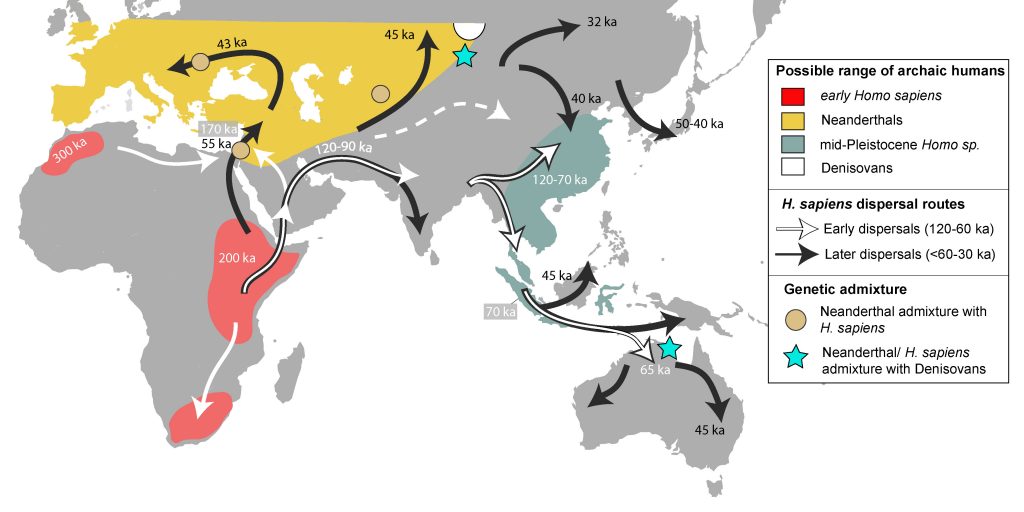Homo sapiens or anatomically modern humans evolved in Africa about 300,000 years ago, from where they dispersed into new environments and different climate regimes (see map). The exact date of modern human dispersals out of Africa is not accurately known, and although the consensus for a ~65-55 ka widespread event stems from genetic and archaeological evidence, it is very likely that multiple such events took place, some much earlier.
What is certain is that by 45,000 years ago modern humans had reached Siberia, then Europe, and navigated across Wallace’s line reaching Australia, thereby crossing several cultural and behavioural rubicons. They produced portable art, ornaments, were able to adapt to new environments and adjusted their technological toolkits to fit their needs using all raw materials available to them (lithics, bone, ivory, and perishable resources such as wood and bamboo). Despite their ultimate success, ancient DNA research reveals that several early modern humans lineages, represented by the ancient genomes of Ust-Ishim (Siberia) and Pestera çu Oase (Romania), did not contribute substantially to the subsequent and more widespread peopling of Eurasia.


